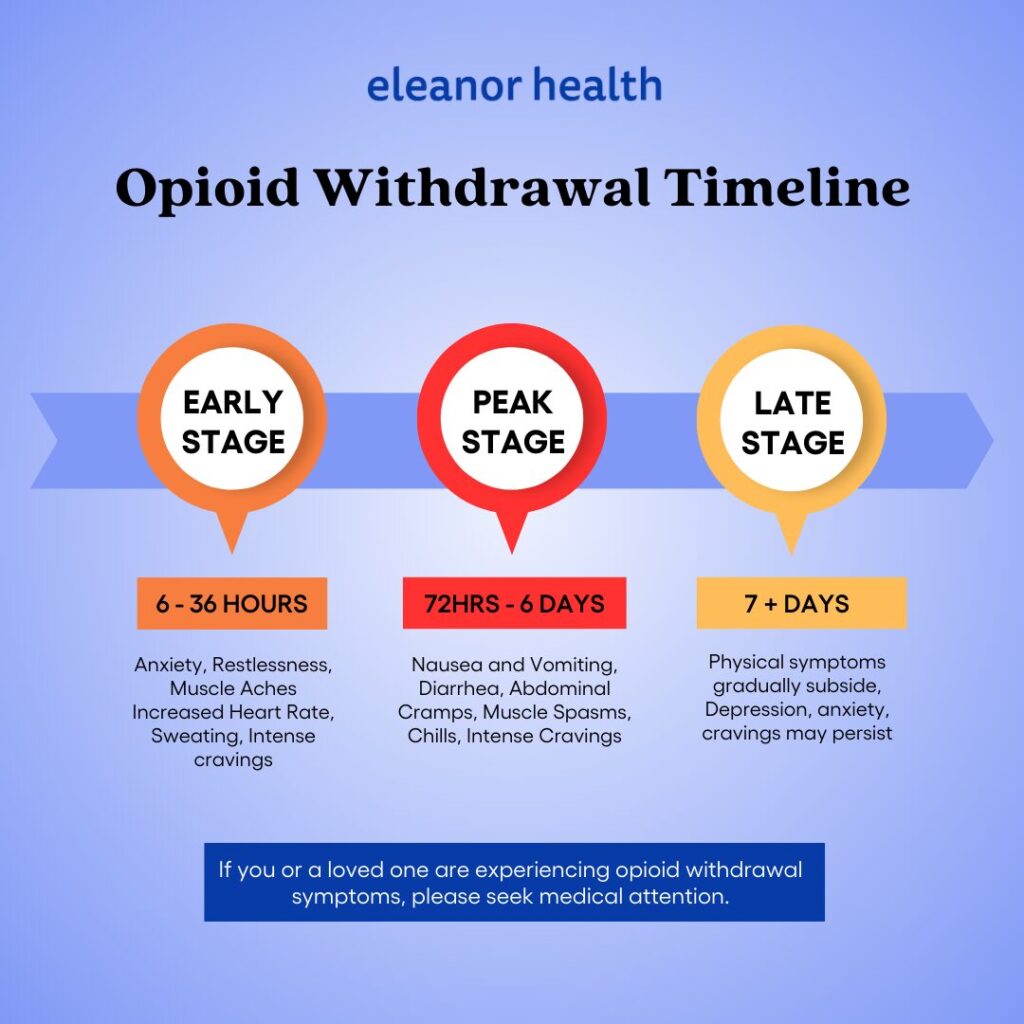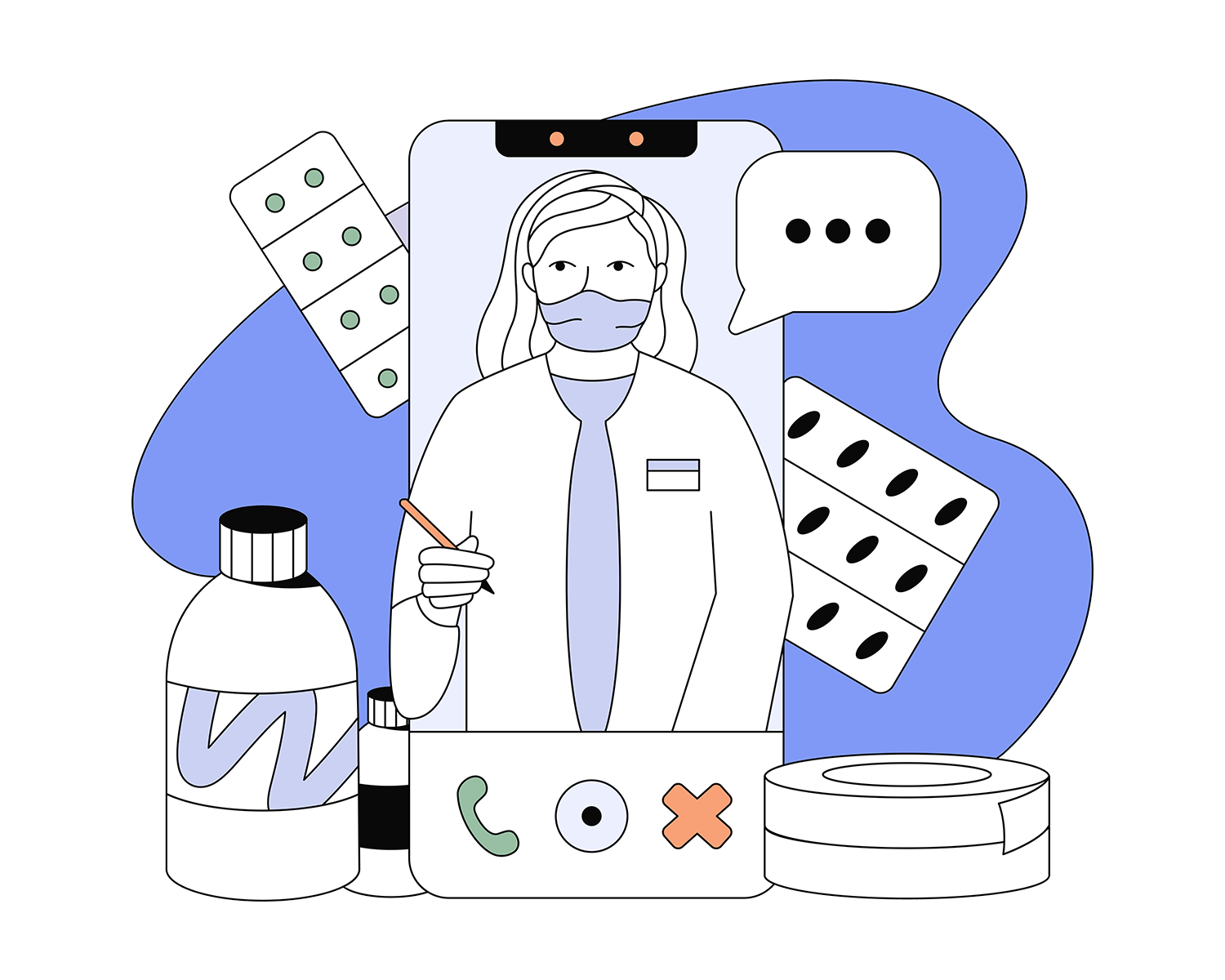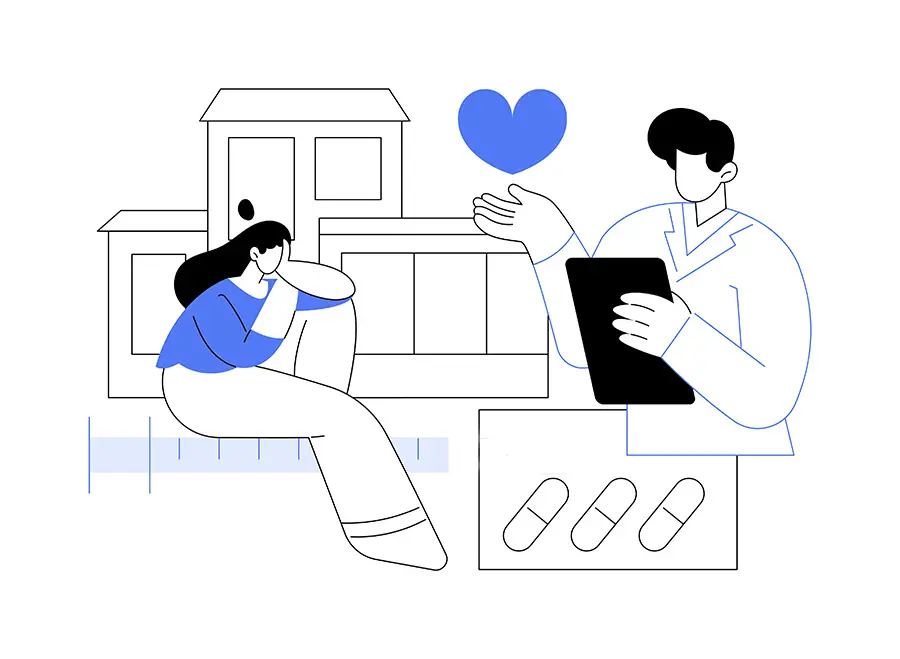Opioid withdrawal is a natural response to the cessation of opioid use. The duration and severity of symptoms vary depending on various factors, including the type of opioid, the dosage, and the duration of use.
Withdrawal is challenging, often painful and potentially dangerous. If you or someone you love is going through withdrawal, contacting a doctor for treatment and support is strongly encouraged. Rehabilitation programs like Eleanor Health can help you handle withdrawal and transition into a recovery program.
Opioid withdrawal refers to the array of symptoms that occur when you abruptly stop or significantly reduce your intake of opioid drugs after developing physical dependence. As your body adjusts to the absence of these substances, it triggers a series of unpleasant physical and psychological reactions.
Opioid withdrawal symptoms can vary in severity, depending on the specific opioid, the duration of use, and individual factors. Many milder symptoms can be treated at home, but serious symptoms require immediate medical attention. Common opioid withdrawal symptoms include:
These symptoms can be both physically and emotionally distressing, making it challenging to cope with the withdrawal process without professional support. The duration of opioid withdrawal symptoms can also vary significantly.
Withdrawal symptoms of short-acting opioids (like heroin, codeine, or oxycodone) typically begin within 8-24 hours after the last dose and peak within 1-3 days. The acute withdrawal phase can last up to 7-10 days, with residual symptoms potentially persisting for weeks or months.
For long-acting opioids (such as methadone or buprenorphine) withdrawal symptoms may take longer to appear, usually within 24-48 hours after the last dose. The acute withdrawal phase can last up to 10-20 days, and, similar to short-acting opioids, residual symptoms can last several weeks or months.

The opioid withdrawal timeline is different for each person, but withdrawal can be generally split into three stages of progression: early, peak, and late.
The early stage of opioid withdrawal typically begins within 6 to 12 hours after the last dose of a short-acting opioid or 24 to 36 hours after the last dose of a long-acting opioid. During this stage, you may experience mild symptoms such as:
Additionally, intense cravings for opioids can occur, making it challenging to resist the urge to use again.
The peak stage of opioid withdrawal is often the most challenging and intense phase. It typically occurs within 72 hours after the last dose of a short-acting opioid or 4 to 6 days after the last dose of a long-acting opioid. During this stage, you may experience a wide range of severe symptoms, including:
These symptoms can be extremely uncomfortable and may require medical intervention to manage effectively.
The late stage of opioid withdrawal typically begins after the peak stage, around 5 to 7 days after the last dose of a short-acting opioid or 7 to 10 days after the last dose of a long-acting opioid. During this stage, the physical symptoms gradually subside, but psychological symptoms, such as depression, anxiety, and cravings, may persist.
The duration of this stage can vary widely, with some individuals experiencing lingering symptoms for several weeks or even months after the initial withdrawal period.
If you or a loved one is experiencing opioid withdrawal symptoms, it is essential to seek medical attention promptly. Here are some situations when you should contact a healthcare professional:
Remember, opioid withdrawal can be challenging and potentially dangerous, especially if attempted without proper medical supervision. Seeking professional help can increase your chances of a successful and safe withdrawal process, ultimately paving the way for long-term recovery.
Opioid use disorder (OUD) is a medical condition that changes your brain chemistry and affects the body. It’s not a moral failure, and it’s not something you can just quit “with enough willpower”. Effective treatment for OUD typically involves a combination of approaches to help you get better, including:
The specific treatment plan is tailored to the individual’s needs, taking into account the severity of the addiction, co-occurring mental health conditions, and personal preferences. If you are going through withdrawal or just need help with your opioid use disorder, Eleanor Health can help. Learn more about our virtual opioid addiction treatment services.
While opioid withdrawal is not typically life-threatening on its own, it can be extremely uncomfortable and challenging to manage without proper medical supervision. In rare cases, severe dehydration or complications from vomiting and diarrhea can lead to dangerous situations if left untreated. If your symptoms are severe, seek medical help immediately.
Several medications can help manage opioid withdrawal symptoms and increase the chances of successful recovery. It’s essential to consult with a healthcare professional to determine the most appropriate medication regimen for your specific situation. In some cases, over the counter medication can help manage withdrawal symptoms, but prescription medications might be required to address the more severe ones.
Besides Buprenorphine, Naltrexone and methadone, medications used to manage withdrawal include:
Yes, you can seek help at the emergency room (ER) if you are experiencing severe opioid withdrawal symptoms that are difficult to manage on your own. The ER can provide immediate medical attention, medication management, and referrals to appropriate treatment facilities or programs.
However, it’s important to note that the ER is typically designed to address acute medical emergencies, and long-term opioid withdrawal management may be better handled through specialized addiction treatment programs or outpatient clinics like Eleanor Health.
 Benefits of Switching From Methadone To Suboxone
Benefits of Switching From Methadone To Suboxone
 Virtual Addiction Treatment: is it as Effective as In-Person Treatment?
Virtual Addiction Treatment: is it as Effective as In-Person Treatment?
 Detoxing from Opioids: How to Do it Safely
Detoxing from Opioids: How to Do it Safely